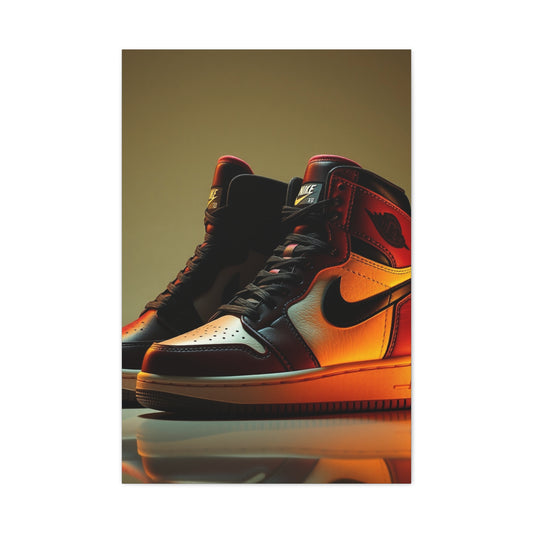In digital photography, the shutter is one of the most critical components of a camera, determining not only how much light reaches the sensor but also how motion is captured in the image. The shutter governs the duration for which the sensor is exposed to light, directly influencing image sharpness, clarity, and fidelity. Understanding how shutters operate is crucial for photographers, especially in dynamic environments where timing, motion, and lighting conditions are unpredictable. Over the years, technological advancements have introduced two dominant types of shutter mechanisms in digital cameras: global shutters and rolling shutters. Each system has unique characteristics, advantages, and limitations that shape the way images are captured.
A global shutter exposes the entire camera sensor simultaneously. In this system, every pixel on the sensor records light at the same moment, creating a snapshot of the scene as a single point in time. This approach is highly effective for eliminating distortions caused by moving objects or camera motion. In contrast, a rolling shutter exposes the sensor sequentially, scanning line by line or column by column across the frame. This sequential exposure can introduce visual artifacts when photographing fast-moving subjects or while panning the camera rapidly, leading to skewed or distorted images. Understanding the operational differences between these two shutter types is fundamental to choosing the right camera for specific photography needs.
Global shutters are often associated with high-end professional cameras, specialized industrial cameras, and scientific imaging devices. These systems are designed to maintain absolute image integrity, capturing motion without distortion. For example, in sports photography, where every millisecond counts, a global shutter ensures that the exact position of a player, ball, or vehicle is accurately represented, preserving details that might otherwise be lost due to motion blur or skewing. Rolling shutters, on the other hand, are prevalent in consumer-grade cameras and smartphones due to their simpler design and lower manufacturing costs. While rolling shutters handle everyday photography and video capture well, they are more susceptible to artifacts in fast-moving scenes.
The implications of shutter choice extend beyond motion capture. Lighting conditions, flash photography, dynamic range, and low-light performance are all influenced by how the shutter interacts with the sensor. For instance, global shutters excel in environments with rapidly changing light or strobe flashes because the simultaneous exposure ensures consistent illumination across the frame. Rolling shutters, while efficient and versatile, may capture uneven lighting in these situations because the sensor is exposed sequentially. Photographers working in environments with challenging light conditions must consider these factors when selecting equipment.
Shutter mechanics also affect creative possibilities in photography. Fast shutter speeds can freeze motion, while slower shutter speeds introduce motion blur for artistic effect. With a global shutter, fast shutter speeds produce perfectly uniform results without distortion, even with high-speed subjects. Rolling shutters, however, require more careful management of shutter speed and camera movement to avoid undesirable artifacts. This distinction is particularly important for videographers, as the rolling shutter effect can create unnatural visual distortions in moving footage, sometimes referred to as the “jello effect.” Understanding how to navigate these limitations allows photographers to achieve desired creative outcomes while maintaining image quality.
Sensor technology underpins the operation of both global and rolling shutters. Most modern digital cameras use CMOS (Complementary Metal-Oxide-Semiconductor) sensors because of their efficiency, flexibility, and ability to integrate complex circuitry. In a global shutter system, CMOS sensors are designed with additional storage elements that allow each pixel to capture and temporarily hold light information simultaneously. After exposure, this information is read out and converted into digital data, preserving the exact timing of the scene. Rolling shutters use similar CMOS sensors but without the simultaneous capture circuitry. Instead, each row or column of pixels records light sequentially, creating a time-lag effect across the frame that can introduce distortions in fast-moving scenarios.
The choice between global and rolling shutters also impacts camera design and cost. Global shutter sensors are more complex, requiring additional components to manage simultaneous exposure and precise readout. This complexity contributes to higher manufacturing costs, which is why cameras with global shutters are often limited to professional or specialized applications. Rolling shutters are simpler to implement, making them the default choice for consumer cameras, mirrorless cameras, and smartphones. Despite the potential for motion artifacts, rolling shutters remain highly effective for everyday photography, where extreme speed and precise timing are less critical.
Understanding the advantages and limitations of each shutter type is essential for photographers planning their shoots. For example, in high-speed sports photography, capturing the exact moment a soccer ball meets a player’s foot or a sprinter crosses the finish line requires precise synchronization that global shutters provide. In contrast, for landscape photography, portraits, or casual travel photography, rolling shutters are sufficient and often preferable due to their efficient sensor performance and lower cost. Photographers can adjust techniques such as shutter speed, panning method, and ISO sensitivity to mitigate the inherent limitations of rolling shutters, ensuring high-quality results without requiring specialized equipment.
Shutter performance also influences post-processing and workflow considerations. Images captured with global shutters typically require less correction for motion artifacts, making editing and compositing more straightforward. Rolling shutter images, especially those with noticeable skew or distortion, may require digital correction, which can introduce minor artifacts or reduce overall image fidelity. Videographers often encounter this issue in high-speed action sequences, where stabilization software and frame-by-frame correction are necessary to maintain visual consistency. Understanding these workflow implications helps photographers plan shoots more efficiently, balancing the technical requirements with creative goals.
Beyond individual shooting scenarios, shutter technology affects the broader evolution of photography. The development of high-speed global shutters has enabled new forms of scientific imaging, industrial inspection, and cinematic techniques that were previously impossible with conventional rolling shutters. Motion analysis, high-speed ballistics photography, and ultra-fast phenomena capture rely on the precision and accuracy that global shutters provide. Meanwhile, rolling shutters have driven innovation in consumer photography, enabling compact camera designs, energy-efficient operation, and cost-effective production without sacrificing usability for most everyday scenarios.
In addition to motion capture, lighting behavior is a critical consideration influenced by shutter type. Global shutters maintain consistent exposure across the frame, making them ideal for flash photography, high-contrast scenes, and controlled studio lighting. Rolling shutters, however, expose the sensor sequentially, meaning that moving light sources or short-duration flashes may illuminate only part of the frame at any given time. This sequential exposure can produce uneven brightness, partial illumination, or streaking effects in fast-action shots. Photographers must account for these factors when shooting events, performances, or dynamic lighting scenarios to ensure the final image reflects the intended visual outcome.
The relationship between shutter speed and motion artifacts is another key consideration. Global shutters allow extremely fast shutter speeds without introducing skew or distortion, providing perfect clarity for objects in motion. Rolling shutters require careful attention to shutter speed relative to subject movement. Slower shutter speeds can exacerbate distortions, while faster shutter speeds may reduce motion blur but still capture subtle skewing if the motion is rapid enough. Mastery of these concepts allows photographers to optimize exposure settings, predict motion effects, and make informed decisions when selecting camera equipment.
Finally, understanding the differences between global and rolling shutters empowers photographers to match their gear to their creative vision. Whether capturing high-speed sports, intricate wildlife behavior, fast-moving machinery, or serene landscapes, knowing how the shutter functions allows for precise control over motion, light, and image fidelity. By evaluating factors such as subject speed, lighting conditions, sensor sensitivity, and budget, photographers can choose the shutter system that best aligns with their needs. This knowledge forms the foundation for advanced photographic techniques and professional-quality results, ensuring that every image is captured with intention and accuracy.
Shutters in digital photography are far more than a mechanism for controlling light—they are the defining element in how motion, timing, and exposure are translated into an image. Global shutters and rolling shutters offer distinct approaches to image capture, each with its own set of advantages, limitations, and applications. Global shutters provide simultaneous exposure that eliminates motion distortions, ideal for high-speed and professional photography. Rolling shutters offer sequential exposure that is cost-effective and versatile, suitable for everyday photography while requiring consideration of motion artifacts. Mastering the differences between these shutter types empowers photographers to make informed equipment choices, optimize shooting techniques, and achieve superior image quality across a wide range of photographic scenarios.
Mechanics of Global Shutters and Their Advantages
Global shutters are a remarkable technological advancement in digital photography, offering unique capabilities that distinguish them from traditional rolling shutters. At their core, global shutters operate by exposing the entire sensor to light simultaneously. This means that every pixel on the sensor begins and ends its exposure at the same instant, effectively freezing a single moment in time across the entire frame. This simultaneous exposure eliminates distortions that often occur in high-speed photography, ensuring the image remains faithful to the scene’s reality. Understanding the mechanics behind global shutters and their practical advantages can help photographers make informed choices about equipment and shooting techniques.
The technology behind global shutters is closely tied to CMOS (Complementary Metal-Oxide-Semiconductor) sensor design. In a global shutter sensor, each pixel is equipped not only with a photodiode for light capture but also with additional storage circuitry. When the shutter opens, all pixels accumulate charge in response to incoming light at the exact same time. After the exposure period, this charge is quickly transferred to storage within the sensor before being converted to digital data. This process ensures that the relative timing between different parts of the scene is perfectly preserved, a critical factor when photographing fast-moving subjects such as athletes, vehicles, or wildlife.
One of the most significant advantages of global shutters is their ability to eliminate motion artifacts. In scenarios where objects are moving quickly or the camera itself is in motion, rolling shutters can create distortions such as skewing, wobbling, or the notorious “jello effect” in video footage. Global shutters, by capturing all pixels simultaneously, prevent these issues. For photographers capturing high-speed action, from motorsport events to bird flight, this results in images that are sharp, accurate, and true to the moment. The benefit extends beyond clarity; it ensures that measurements, alignment, and spatial relationships within the scene remain intact, which is particularly important in professional and scientific photography.
Another advantage of global shutters is their performance under complex lighting conditions. Because every pixel is exposed at the same instant, scenes with fast-changing light sources or strobe flashes are rendered accurately without uneven illumination. For example, in flash photography, a global shutter ensures that the entire frame is lit uniformly, even if the flash duration is extremely brief. In contrast, rolling shutters might capture only part of the flash at a given time, leading to partially lit frames or inconsistent brightness. This uniform exposure also benefits time-lapse photography and scenarios involving synchronized lighting, where precise light capture is essential.
Global shutters also excel in capturing extremely fast phenomena that occur in fractions of a second. Scientific applications, such as high-speed microscopy, ballistics testing, and industrial inspection, often rely on global shutter sensors to freeze motion precisely. For instance, when photographing a bullet piercing an object or a chemical reaction taking place, even the slightest sequential exposure difference could introduce distortion, rendering the data unreliable. Global shutters remove this limitation by ensuring that all pixels respond simultaneously, capturing the entire event in one unified image. This capability is also invaluable for high-speed cinematography, where the integrity of every frame is crucial for post-production, visual effects, or analysis.
The sensor architecture required for global shutters is inherently more complex than that of rolling shutters. Each pixel must store its captured charge temporarily before readout, requiring additional electronic components. This complexity is one reason why global shutter cameras tend to be more expensive and less prevalent in consumer devices. However, the investment is justified in scenarios where accuracy, motion fidelity, and image integrity are paramount. Professional photographers and specialized industries often prioritize global shutters despite higher costs because they enable photographic and analytical possibilities that are otherwise unattainable.
Global shutters also provide advantages in dynamic range management and post-processing. Because motion artifacts are minimized, images captured with global shutters require less correction in post-production, preserving details and reducing potential degradation from software fixes. Photographers can focus on creative adjustments, color grading, and composition rather than correcting skewed or distorted elements. This efficiency is particularly valuable in professional workflows where time is critical, and the accuracy of captured data impacts the final output, such as in product photography, architectural imaging, or aerial drone surveys.
When considering the practical applications of global shutters, action photography immediately comes to mind. Sports photographers, for example, must capture split-second moments that define the outcome of a game, such as a tennis ball crossing the net or a football player making a decisive move. In these scenarios, even a slight distortion caused by sequential exposure can ruin an otherwise perfect shot. Global shutters guarantee that every element in motion is recorded in its true position, allowing photographers to capture peak action moments with precision and clarity. Wildlife photographers also benefit when photographing birds in flight or predators in motion, ensuring that wings, limbs, and fast-moving subjects are captured accurately without motion-induced bending or skewing.
Industrial and scientific imaging also relies heavily on the advantages provided by global shutters. In high-speed manufacturing lines, global shutter cameras can monitor the movement of objects with extreme precision, detecting defects or misalignments without introducing motion blur. Similarly, in laboratory environments, global shutters enable the precise recording of fast chemical reactions, fluid dynamics, or mechanical tests. The ability to synchronize the entire sensor simultaneously with external triggers, such as strobe lights or timing devices, ensures that data integrity is maintained, which is critical for analysis and measurement.
Despite their many advantages, global shutters do have limitations. One such limitation is a slightly lower sensitivity to light compared to some rolling shutter designs. Because global shutter pixels often include extra storage components, the effective light-capturing area (fill factor) can be reduced, impacting performance in very low-light conditions. However, advances in sensor technology, such as back-illuminated sensors and improved micro-lens design, have mitigated these limitations, allowing global shutters to perform effectively even in challenging lighting environments. Additionally, the added complexity can lead to higher production costs, making global shutter cameras less common in consumer markets.
From a creative perspective, global shutters empower photographers to experiment with high-speed effects that would be difficult or impossible with rolling shutters. Freezing water droplets in midair, capturing explosive action sequences, or shooting fast-moving vehicles at night can be achieved with minimal distortion. Photographers can also confidently pan the camera during fast-moving events without worrying about skewed lines or warped objects, opening up possibilities for dynamic motion compositions that retain technical accuracy. This versatility makes global shutters a preferred choice for professionals and enthusiasts who demand precision and flexibility in challenging environments.
Global shutters also simplify the synchronization of multiple cameras in complex setups. For instance, in motion capture studios, sports analytics, or VR/AR imaging, multiple cameras must capture the same moment from different angles. Using global shutters ensures that all cameras record simultaneously, avoiding discrepancies in timing that could complicate post-processing or analysis. This capability is crucial in applications where every frame must be aligned precisely across multiple perspectives, from cinematic productions to scientific experiments.
Finally, the impact of global shutters extends to video recording as well. High-speed cinematography, slow-motion footage, and aerial drone videography benefit from distortion-free frames, maintaining smooth, accurate motion without the rolling shutter artifacts that can compromise visual quality. For content creators, filmmakers, and videographers, this means less time correcting footage and more opportunities for creative storytelling. In essence, global shutters provide both technical excellence and creative freedom, enabling photographers and videographers to capture moments exactly as they occur.
Global shutters represent a pinnacle in digital camera technology, combining simultaneous exposure, precise motion capture, and consistent lighting performance. Their advantages are evident in high-speed photography, professional applications, industrial imaging, and scientific research. While they are more complex and expensive to manufacture compared to rolling shutters, their ability to eliminate motion artifacts, preserve image integrity, and enable advanced creative techniques makes them invaluable for photographers who prioritize precision, speed, and accuracy. By understanding the mechanics and benefits of global shutters, photographers can harness this technology to capture images with unparalleled fidelity, ensuring that every split-second moment is rendered exactly as it occurs.
Rolling Shutters Work and Their Implications
Rolling shutters represent one of the most widely implemented technologies in digital photography, particularly in consumer cameras, smartphones, and mid-range mirrorless systems. Unlike global shutters, which capture the entire image simultaneously, rolling shutters expose the camera sensor sequentially, line by line or column by column. This sequential process allows for simpler sensor design, lower manufacturing costs, and efficient readout speeds, but it also introduces unique effects that photographers must understand to maximize image quality and minimize distortions.
The basic principle behind a rolling shutter involves scanning the image sensor progressively across the frame. For a typical CMOS sensor, this means that the top row of pixels begins exposure first, followed shortly by the next row, and so on, until the entire sensor has been exposed. Each row is exposed for the same duration, but the exposure start time varies slightly between rows. Once a row has completed its exposure, the light information is converted into an electrical charge and then digitized by the camera’s analog-to-digital converter (ADC). Finally, the image is assembled from all the sequentially captured rows into a single frame.
One of the most noticeable consequences of this sequential exposure is the rolling shutter effect. When photographing fast-moving subjects or rapidly panning the camera, objects may appear stretched, skewed, or warped. For example, vertical lines in a building may appear slanted if the camera moves horizontally during capture. Similarly, fast-spinning objects, such as propellers, wheels, or machinery, often appear bent or distorted in rolling shutter images. This effect is particularly prominent in video recording, where it can create unnatural visual motion artifacts that resemble a wobbling or jiggling effect across the frame, sometimes referred to as the “jello effect.”
Despite these limitations, rolling shutters have several practical advantages. First, they are significantly simpler to manufacture compared to global shutters. The sequential exposure method eliminates the need for complex storage circuitry in each pixel, reducing sensor cost and complexity. This is one reason rolling shutters dominate the consumer market, from compact cameras to smartphones. Additionally, the sequential readout allows for highly efficient data handling, resulting in lower power consumption and faster continuous shooting performance. For photographers who prioritize affordability and convenience, rolling shutters provide a reliable solution for everyday photography.
Rolling shutters also offer advantages in dynamic range and low-light performance. Because sequential exposure allows each pixel to capture light without extra circuitry taking up sensor area, rolling shutter sensors often achieve higher light sensitivity. This is especially useful in dim environments, indoor photography, or night scenes, where maintaining sufficient exposure without increasing ISO noise is critical. The efficiency of rolling shutters enables cameras to optimize light capture while maintaining smaller, lighter, and more affordable designs, making them ideal for portable and versatile imaging devices.
Understanding the mechanics of rolling shutters also highlights why certain artifacts occur. For instance, in fast panning scenarios, the sequential exposure causes different rows of pixels to capture the scene at slightly different times. This results in horizontal skewing, where objects appear slanted in the direction opposite to camera movement. Similarly, objects moving vertically at high speeds may appear compressed or elongated due to the time difference between when the top and bottom rows are captured. In video, these distortions can create noticeable wobbles, especially when filming handheld or in aerial drone footage. Awareness of these effects allows photographers and videographers to adjust their technique to minimize unwanted artifacts.
There are several strategies to mitigate rolling shutter effects. Using faster shutter speeds reduces motion between sequential rows, decreasing distortion. Limiting camera panning or stabilizing the camera on a tripod can also reduce skewing. For video, post-processing tools can correct minor distortions, straighten lines, and stabilize motion. However, severe rolling shutter artifacts caused by very high-speed motion can be difficult to completely correct, emphasizing the importance of anticipating the limitations of this shutter type during shooting.
Rolling shutters excel in capturing static or moderately moving scenes. For example, landscape photography, portraits, architectural shots, and studio work rarely involve high-speed motion that would trigger noticeable artifacts. In these contexts, rolling shutters offer excellent image quality, high dynamic range, and effective low-light performance. They also allow for compact camera designs, which is why smartphones, mirrorless cameras, and entry-level DSLRs almost exclusively use rolling shutters. These cameras deliver consistent, high-quality results in everyday photography scenarios, making rolling shutters the default choice for most users.
The sequential nature of rolling shutters also affects flash photography and lighting synchronization. Unlike global shutters, rolling shutters expose the sensor line by line, meaning that brief flashes or strobe lighting may illuminate only a portion of the frame at a given instant. This can result in uneven brightness, partial illumination, or streaks of light, especially in high-speed action or studio photography with multiple flashes. Photographers working in controlled lighting conditions need to understand these implications to properly time their exposures or adjust lighting to achieve uniform results.
In addition to photography, rolling shutters have implications for video production. Motion artifacts can be particularly noticeable in handheld or fast-moving shots. For example, handheld drone footage often exhibits wobbly or slanted imagery when using rolling shutter cameras, especially if the gimbal stabilization is imperfect. Filmmakers and content creators must take these effects into account, either by using cameras with faster readout speeds, employing mechanical stabilization, or applying post-processing corrections to maintain visual consistency. Understanding these technical characteristics allows creators to plan shots effectively and avoid undesirable distortions.
The design simplicity of rolling shutters has also enabled innovations in mobile photography. Compact devices, where space is at a premium, rely on rolling shutter sensors to balance image quality, size, and power consumption. Their lower cost and efficient operation allow manufacturers to include higher resolution sensors, advanced image processing, and computational photography features, such as multi-frame noise reduction and HDR imaging. These advantages make rolling shutters a practical choice for consumer devices while still delivering high-quality results in most real-world photography scenarios.
Rolling shutters are also adaptable for high-speed continuous shooting. Since pixels are read sequentially, the sensor can maintain high frame rates without the complex storage demands of a global shutter. This makes rolling shutters suitable for burst photography and video capture at standard frame rates. Although motion artifacts may appear with extremely fast subjects, careful technique—such as minimizing panning and using faster shutter speeds—can often reduce the impact to acceptable levels, especially in casual or semi-professional photography.
Despite these advantages, it is crucial to recognize the trade-offs inherent in rolling shutters. While efficient and versatile, they can struggle in situations involving very high-speed motion, rapid camera movement, or short-duration flashes. Skewed lines, bent propellers, and wobbling footage are all manifestations of the sequential exposure mechanism. Photographers who frequently shoot sports, action sequences, or high-speed events may find these limitations problematic, particularly when precise motion capture is required. In these cases, global shutters or specialized high-speed cameras become the preferred choice.
Ultimately, rolling shutters offer a combination of affordability, efficiency, and solid performance that meets the needs of most photographers. Their widespread adoption in consumer devices is a testament to their versatility and practicality. By understanding the sequential exposure process, photographers can anticipate potential artifacts, adjust camera settings, and implement shooting techniques that minimize distortions. When applied correctly, rolling shutters produce high-quality images suitable for landscapes, portraits, casual video, and everyday photography, while still offering the flexibility and performance demanded by modern imaging technology.
Rolling shutters are a foundational technology in digital photography, providing a cost-effective, versatile, and efficient method for image capture. Their sequential exposure method allows for compact camera designs, high sensitivity, and effective performance in most everyday scenarios. However, rolling shutters are susceptible to motion artifacts when photographing fast-moving subjects or using rapid camera movements, creating skewing, bending, or wobbling effects. Understanding the mechanics, limitations, and practical strategies to mitigate these effects enables photographers and videographers to use rolling shutters effectively, producing high-quality images while avoiding common pitfalls. While global shutters dominate specialized applications requiring precise motion capture, rolling shutters remain the standard for consumer photography, balancing quality, affordability, and performance.
Comparing Global and Rolling Shutters in Practical Photography
When it comes to choosing between global and rolling shutters, the decision often hinges on the specific type of photography, the speed of subjects, and the environmental conditions in which images are captured. Both shutter types have unique strengths and limitations, and understanding these differences can guide photographers in selecting the most appropriate equipment and techniques for their creative needs. By examining practical scenarios, it becomes clear how each shutter type influences image quality, motion capture, and overall photographic performance.
Global shutters excel in scenarios where motion is fast and precise capture is essential. In sports photography, for instance, athletes move rapidly across the frame, and a rolling shutter can distort the image, making straight lines appear bent or fast-moving objects appear warped. Global shutters eliminate these distortions because the entire sensor is exposed simultaneously. Photographers can freeze split-second action, capturing a tennis ball in mid-flight or a sprinter crossing the finish line with complete clarity. The preservation of spatial relationships within the scene ensures that every element appears exactly as it exists in reality, which is particularly valuable when accuracy is as important as aesthetics.
Wildlife photography is another area where global shutters prove invaluable. Birds in flight, running animals, or insects in motion can move at high speeds, often in unpredictable patterns. Using a rolling shutter in these situations can introduce skewing or elongation, misrepresenting the true motion of the subject. A global shutter captures all movement instantaneously, allowing photographers to create images that reflect the natural motion accurately. This precision is also critical in scientific or industrial applications, such as high-speed fluid analysis or mechanical testing, where data integrity is essential.
Rolling shutters, however, offer advantages that make them suitable for a wide range of everyday photography. For landscapes, portraits, and indoor photography, subjects are often static or move at relatively slow speeds. In these cases, the sequential exposure of a rolling shutter does not introduce noticeable artifacts, and the sensor can take advantage of its higher light sensitivity and dynamic range. This allows photographers to capture detailed images with excellent color fidelity, smooth gradients, and low noise, even in challenging lighting conditions. Rolling shutters are therefore highly practical for general photography, travel photography, and casual use, balancing quality, affordability, and versatility.
Lighting conditions also play a significant role in comparing shutter performance. Global shutters provide uniform exposure across the frame, making them ideal for situations involving strobe lights, fireworks, or synchronized flash photography. Every pixel receives light simultaneously, preventing partial illumination or uneven brightness that can occur with rolling shutters. Rolling shutters, due to their sequential exposure, may capture only part of a flash at any given instant, potentially creating streaks or uneven illumination. Photographers who frequently work in controlled lighting environments or with rapid flashes benefit from the consistency provided by global shutters.
In video production, the difference between global and rolling shutters becomes even more pronounced. Rolling shutters are prone to motion-induced distortions, especially when filming handheld or from moving platforms like drones or vehicles. Fast panning or rapid subject movement can produce skewed lines, wobbling, or jello-like effects that detract from visual quality. Global shutters, by capturing all pixels simultaneously, maintain smooth, accurate motion, ensuring that every frame remains distortion-free. This reliability is particularly valuable for professional videographers, filmmakers, and content creators who require consistent and high-quality footage without extensive post-production correction.
Budget considerations are another factor in shutter choice. Global shutter cameras tend to be more expensive due to their complex sensor architecture, additional storage requirements, and advanced circuitry. Rolling shutters are simpler, more cost-effective, and widely available in consumer cameras, making them accessible to a broader audience. For amateur photographers, hobbyists, or those with budget constraints, rolling shutters provide excellent performance for everyday shooting while minimizing cost and complexity. However, professionals or those working in high-speed environments often justify the investment in global shutters for the superior performance and image integrity they provide.
Sensor design also influences low-light performance and dynamic range. Rolling shutters often allow for higher light sensitivity because the sequential exposure method does not require additional storage circuitry in each pixel. This can result in better performance in dimly lit environments, smoother tonal transitions, and lower noise levels. Global shutters, while excellent at motion capture, may sacrifice some light sensitivity due to the additional components required for simultaneous exposure. Recent advancements in sensor technology, including back-illuminated sensors and improved micro-lens designs, have mitigated these differences, allowing global shutters to perform more effectively even in low-light conditions.
Another practical consideration is the ability to synchronize multiple cameras. In multi-camera setups, such as motion capture studios, virtual reality environments, or cinematic productions, synchronization is crucial. Global shutters ensure that all cameras capture the same moment simultaneously, maintaining precise alignment between frames. Rolling shutters, with their sequential exposure, introduce slight timing differences that may complicate post-production alignment or analysis. For professionals working in environments requiring exact timing and frame consistency, global shutters are often the preferred choice.
Rolling shutters also allow for higher frame rates in certain applications. Because the sensor reads out sequentially, rolling shutters can capture a large number of frames quickly without the complex storage demands of global shutters. This makes them suitable for burst photography, high-resolution video recording at standard frame rates, and continuous shooting scenarios. While motion artifacts may appear with very fast-moving subjects, careful technique—such as minimizing camera movement or using higher shutter speeds—can reduce the impact to acceptable levels for most consumer and enthusiast applications.
Post-processing considerations further highlight differences between the two shutter types. Images captured with global shutters typically require minimal correction for motion artifacts, allowing photographers to focus on color grading, composition, and creative adjustments. Rolling shutter images, especially those captured in fast-moving scenes, may require digital correction to straighten skewed lines or reduce motion distortions. While software can address minor issues, extreme cases may be challenging to correct fully, emphasizing the importance of understanding and anticipating the limitations of rolling shutters during the shooting process.
In practical terms, the choice between global and rolling shutters often comes down to a combination of subject speed, lighting, equipment budget, and desired image quality. For fast-action photography, sports, wildlife, or industrial applications where motion fidelity is critical, global shutters offer unparalleled advantages. They provide clean, distortion-free images, precise timing, and consistent exposure across the entire frame. Rolling shutters, on the other hand, excel in everyday scenarios, landscapes, portraits, travel photography, and casual video recording, offering affordability, efficiency, and strong overall image quality.
Photographers can also adapt their shooting techniques to make the most of each shutter type. When using a global shutter, fast shutter speeds, precise panning, and strobe synchronization can be utilized without concern for motion artifacts. With a rolling shutter, careful management of camera movement, shutter speed, and subject motion helps minimize distortions. Understanding these technical and creative considerations allows photographers to choose equipment and techniques that align with their shooting style and objectives.
Ultimately, comparing global and rolling shutters in practical photography reveals a balance between precision, affordability, and versatility. Global shutters dominate in professional, high-speed, or specialized applications where motion artifacts cannot be tolerated. Rolling shutters dominate in consumer, casual, and general photography scenarios, offering sufficient quality for most users while reducing cost and complexity. By understanding the strengths and limitations of each shutter type, photographers can make informed choices that optimize their equipment and techniques, ensuring that every image—whether a still photo or a video frame—meets their creative and technical expectations.
The comparison also highlights the evolving nature of digital photography technology. Advances in sensor design, faster readout speeds, and software-based correction techniques are narrowing the gap between global and rolling shutters. Rolling shutters are becoming increasingly capable of handling motion without introducing severe artifacts, while global shutters are becoming more accessible and efficient. This convergence provides photographers with more flexibility, allowing them to select the right shutter type for their creative needs without being constrained by outdated performance limitations.
Practical photography demonstrates the distinct roles and advantages of global and rolling shutters. Global shutters offer unmatched accuracy in motion capture, uniform exposure, and precise synchronization, making them ideal for professionals and specialized applications. Rolling shutters provide cost-effective, versatile performance for everyday photography, capable of producing high-quality images in static or moderately dynamic environments. By understanding how each shutter functions, photographers can make informed decisions, optimize their shooting techniques, and select equipment that delivers the best results for their specific scenarios. Mastery of shutter mechanics, combined with thoughtful application, empowers photographers to achieve superior image quality, whether freezing split-second action or capturing serene, motionless scenes.
Innovations and Future Trends in Shutter Technology
Shutter technology in digital cameras has advanced significantly over the past few decades, transforming how photographers capture motion, light, and precise moments in time. Both global and rolling shutters have evolved to meet the demands of modern photography, driven by improvements in sensor design, electronics, and computational imaging. Understanding these innovations and anticipating future trends provides photographers with insight into how shutter technology will continue to shape image capture, creative possibilities, and professional workflows.
One major area of innovation is in sensor readout speeds. Traditional rolling shutters expose pixels sequentially, which could result in motion artifacts for fast-moving subjects. Modern rolling shutter sensors now operate at dramatically higher readout speeds, significantly reducing the time difference between the first and last rows of pixels. This improvement diminishes the severity of rolling shutter artifacts, making images of fast-moving subjects appear closer to those captured by global shutters. Faster readout speeds also enable higher frame rates in video and burst photography, offering smoother motion capture and greater flexibility for creative expression.
Global shutter technology has also benefited from innovations in sensor architecture. Early global shutters were limited by complexity and reduced light sensitivity due to the additional storage circuitry required for simultaneous pixel capture. Advances in back-illuminated CMOS sensors, improved micro-lens designs, and more efficient charge storage systems have enhanced light sensitivity while maintaining the advantages of simultaneous exposure. These innovations make global shutters more viable in low-light conditions, widening their applicability beyond high-speed industrial or scientific photography into areas such as sports, wildlife, and high-speed cinematography.
Hybrid shutter technologies are emerging as a bridge between traditional rolling and global shutters. Some modern cameras incorporate electronic global shutter modes that simulate simultaneous exposure while maintaining the efficiency of sequential readout. These hybrid solutions reduce motion artifacts while preserving light sensitivity and dynamic range, offering a compromise for photographers who need high-speed accuracy without sacrificing low-light performance. Hybrid designs also make global shutter functionality more accessible in consumer-level cameras, extending its benefits to a broader audience.
Advancements in computational photography are further transforming shutter capabilities. Software algorithms can now analyze sequential exposure data from rolling shutters to correct skew, wobble, and other motion artifacts in post-processing. These algorithms compare motion vectors across frames and adjust pixel positions digitally, creating an output that closely approximates a global shutter capture. While not perfect, these techniques significantly reduce the visual impact of rolling shutter distortions, enabling high-speed photography on consumer cameras and smartphones without requiring complex hardware modifications.
Machine learning and artificial intelligence are beginning to play a role in managing shutter performance. AI-driven algorithms can predict subject motion and adjust readout timing, shutter speed, or exposure dynamically to minimize distortions. For example, a camera could anticipate the path of a fast-moving athlete or a spinning propeller and optimize sensor readout accordingly. These intelligent systems blur the traditional boundaries between global and rolling shutters, offering a new era of adaptive shutter technology that responds in real time to scene conditions and motion patterns.
In addition to sensor innovations, improvements in electronic components and materials are shaping the future of shutter technology. Faster analog-to-digital converters (ADCs) allow for rapid digitization of pixel data, reducing latency between exposure and readout. High-speed memory integration within the sensor chip enables instantaneous storage of captured charge, which is crucial for both global and hybrid shutter systems. Emerging materials for photodiodes and micro-lenses enhance light sensitivity and reduce noise, improving image quality even in challenging lighting conditions. These advancements collectively increase the performance, versatility, and efficiency of modern shutters.
Future trends also include the integration of multi-sensor systems. Cameras with multiple sensors can capture the same scene simultaneously from different perspectives, enabling high-speed motion capture, 3D reconstruction, and advanced depth mapping. In these systems, global shutter functionality ensures that all sensors capture the scene at the same instant, providing perfect synchronization across angles. Rolling shutter sensors can also participate in multi-sensor arrays if readout speeds are sufficiently fast or computational correction is applied. These developments have applications in cinematography, virtual reality, autonomous vehicles, and scientific imaging.
High-speed imaging continues to drive innovation in global shutter design. For industries such as aerospace, robotics, manufacturing, and scientific research, capturing ultra-fast events with precision is critical. Innovations like faster charge transfer mechanisms, integrated pixel storage, and optimized timing circuits allow global shutters to handle extremely rapid exposures without losing accuracy. These improvements expand the potential for professional and industrial applications, including high-speed crash analysis, fluid dynamics research, and particle tracking, where every millisecond of timing is crucial.
Consumer technology is also benefiting from these advances. Smartphones, action cameras, and mirrorless cameras are incorporating faster readouts, hybrid global shutter modes, and computational corrections to deliver high-quality images even in fast-moving scenarios. This democratization of advanced shutter technology enables casual photographers and content creators to capture dynamic scenes that were previously limited to professional equipment. The result is higher-quality images and video with reduced distortion, greater flexibility in shooting conditions, and improved creative possibilities.
Another exciting area of development is in video capture. Global shutters and high-speed rolling shutters combined with computational corrections allow filmmakers to shoot high-resolution, high-frame-rate footage without the need for specialized hardware. This capability enables slow-motion effects, dynamic action sequences, and complex visual storytelling without compromise. Hybrid systems and AI-assisted processing also allow for real-time stabilization and artifact correction, providing a workflow that is both efficient and creative.
Sustainability and energy efficiency are influencing shutter design as well. Modern sensors and electronic shutters are designed to minimize power consumption while maintaining high performance, extending battery life in portable cameras and drones. Efficient sensor readout, adaptive exposure control, and optimized circuitry reduce the energy requirements of global and rolling shutters alike, making high-performance imaging more environmentally and economically sustainable.
Looking ahead, we can anticipate the emergence of fully adaptive, intelligent shutter systems that combine the best of both worlds. These systems would dynamically switch between global, rolling, and hybrid modes based on subject motion, lighting conditions, and creative intent. For example, a camera could employ a global shutter when capturing a fast-moving subject, then automatically revert to a rolling shutter mode in low-light scenes for improved sensitivity. Such adaptive technology would provide photographers with unparalleled flexibility, optimizing image quality while reducing the need for manual adjustments.
Additionally, new materials and nanotechnology could revolutionize sensor design, allowing for faster, more sensitive, and more accurate pixel capture. Photodiodes with higher efficiency, novel micro-lens arrays, and reduced electronic noise could enable global shutter performance in ultra-compact devices without compromising light sensitivity. These breakthroughs have the potential to bring professional-grade shutter technology to consumer cameras, smartphones, and drones, further narrowing the gap between specialized and everyday imaging equipment.
The convergence of hardware improvements, computational photography, AI, and materials science points to a future where the limitations of traditional shutter technology are minimized. Rolling shutter artifacts can be virtually eliminated through faster readouts and intelligent corrections, while global shutter systems become more sensitive, compact, and affordable. This evolution provides photographers and videographers with tools that are both technically advanced and creatively empowering, allowing them to focus on composition, storytelling, and artistic expression rather than equipment constraints.
Innovations in shutter technology are reshaping the landscape of digital photography. Faster readout speeds, hybrid systems, computational corrections, AI-assisted adjustments, and advanced sensor materials are all contributing to more versatile, efficient, and capable global and rolling shutters. Photographers now have access to tools that allow high-speed capture, precise motion fidelity, improved low-light performance, and artifact-free imaging across a wide range of scenarios. The future promises adaptive, intelligent, and highly efficient shutter systems that blend the strengths of both global and rolling technologies, expanding creative possibilities and elevating the art and science of photography to new heights.
Practical Tips and Considerations for Using Global and Rolling Shutters
Understanding the technical aspects of global and rolling shutters is essential, but applying this knowledge effectively in real-world photography elevates both the quality of images and the photographer’s creative control. Each shutter type requires a different approach to composition, movement, lighting, and exposure. By implementing practical strategies and adopting best practices, photographers can maximize the advantages of their camera’s shutter system while minimizing potential limitations.
When working with a global shutter, one of the most important considerations is harnessing its ability to capture fast-moving subjects accurately. Because every pixel is exposed simultaneously, motion artifacts such as skewing or wobbling are eliminated. Photographers should take advantage of this by shooting sports, wildlife, or action sequences at the fastest shutter speeds possible. For example, in motorsports photography, capturing a race car mid-turn or a cyclist in full sprint benefits greatly from the global shutter’s ability to preserve every detail without distortion. Similarly, wildlife photographers photographing birds in flight can rely on precise timing, knowing that every feather and wing movement will be accurately represented.
Global shutters also perform exceptionally well in flash and strobe lighting situations. Photographers working in studio environments, concert photography, or events with synchronized lighting should leverage the uniform exposure of a global shutter to achieve consistent brightness across the frame. When shooting multiple flashes or high-speed lighting sequences, the simultaneous capture ensures that each pixel receives the light at the same moment, eliminating partially illuminated frames and maintaining exposure integrity. Adjusting flash duration and timing can further enhance results, particularly when photographing fast subjects under complex lighting setups.
Another practical tip for global shutter users is to consider ISO and exposure settings carefully. While global shutters excel in motion capture, their complex circuitry may slightly reduce light sensitivity compared to some rolling shutter designs. Photographers should experiment with ISO levels, aperture settings, and lens choices to ensure optimal performance in low-light conditions. Modern global shutter cameras often feature back-illuminated sensors and advanced micro-lens arrays, which mitigate light sensitivity concerns, but understanding the interaction between light and sensor technology remains crucial for achieving high-quality results.
Camera stabilization is still important, even with a global shutter, particularly for low-light scenarios or long exposures. While motion artifacts are minimized, the clarity of the image can still be compromised by camera shake. Using tripods, monopods, or gimbal systems can enhance image sharpness, especially when photographing night scenes, astrophotography, or macro subjects. Photographers can combine the global shutter’s precise exposure with careful stabilization to achieve perfectly sharp, distortion-free images in virtually any environment.
When using rolling shutters, the approach shifts to managing sequential exposure to minimize distortion. Rolling shutters capture the sensor line by line, which introduces time differences between the top and bottom of the frame. This can result in skewed lines, bent objects, or wobbling in videos. One practical tip is to avoid rapid panning or fast camera movement, especially in high-action scenes. Slower, deliberate movements reduce the time differential between rows of pixels, minimizing noticeable artifacts and maintaining visual consistency.
Shutter speed management is critical for rolling shutter photography. Using faster shutter speeds helps reduce motion blur and skewing by decreasing the time during which pixels are exposed. For fast-moving subjects, photographers should synchronize shutter speed with subject speed, effectively “freezing” motion to prevent distortions. For video recording, employing high frame rates can also reduce rolling shutter effects, creating smoother motion capture and more visually pleasing results.
Lighting considerations are another practical factor for rolling shutters. Photographers should be aware that short-duration flashes, strobe lights, or rapidly changing light conditions may not illuminate the entire sensor evenly. Planning lighting setups, extending flash duration, or synchronizing flashes with exposure timing can help prevent partial illumination or streaking artifacts. For outdoor photography, shooting during consistent lighting conditions or avoiding extreme contrasts reduces potential issues caused by sequential exposure.
Post-processing techniques can compensate for rolling shutter limitations in certain scenarios. Modern software allows the correction of skewed lines, straightening of bent objects, and stabilization of wobbling video footage. Photographers and videographers can leverage these tools to refine images after capture, although extreme distortions may still be challenging to correct fully. Understanding how and when to apply post-processing ensures that rolling shutter images maintain high quality without relying solely on hardware limitations.
Camera positioning and shooting angles are also important considerations. For rolling shutters, shooting subjects that move vertically rather than horizontally can reduce the perception of skewing. Similarly, minimizing rotation or tilt during video recording helps avoid the “jello effect” and maintains the integrity of lines and shapes in the frame. Awareness of subject motion relative to the sensor readout direction allows photographers to plan shots that naturally reduce artifacts, even in dynamic environments.
For hybrid or advanced camera systems that offer both global and rolling shutter modes, selecting the appropriate mode based on the shooting scenario is key. Fast action, sports, and high-speed events benefit from global shutter mode, while static subjects, landscapes, and low-light scenes may perform better with rolling shutter mode due to enhanced light sensitivity. Understanding the strengths and limitations of each mode allows photographers to optimize image quality without compromise, adapting techniques to each unique shooting situation.
Understanding the interaction between lens choice and shutter performance is another practical tip. Telephoto lenses amplify motion, making rolling shutter distortions more noticeable, while wide-angle lenses minimize the visual impact of sequential exposure. Photographers using rolling shutters for fast-moving subjects may prefer shorter focal lengths or stabilized lenses to reduce the appearance of skewing. Conversely, global shutters provide freedom to use any lens without concern for motion artifacts, allowing greater creative flexibility in composition and framing.
Battery management and camera settings are also practical considerations, especially for high-speed shooting. Continuous shooting, video recording, and fast readout operations can increase power consumption, particularly in cameras with global shutters. Photographers should ensure adequate battery capacity, use energy-efficient settings, and plan for recharging during extended shoots to maintain consistent performance. This is especially relevant for outdoor or remote photography sessions where power sources may be limited.
For videographers, the choice of shutter type plays a pivotal role in determining the smoothness, clarity, and overall quality of motion capture. Understanding whether a camera uses a global or rolling shutter is essential because it directly impacts how moving subjects and camera movements are recorded. A rolling shutter, by design, exposes the sensor sequentially rather than all at once. While this approach has many practical advantages, such as cost efficiency and higher light sensitivity, it introduces unique challenges in motion capture. The sequential exposure can result in artifacts when either the subject or the camera moves quickly during recording. These artifacts often manifest as skewed lines, bending of straight objects, wobbling, or the so-called “jello effect,” where the image appears to ripple unnaturally. Recognizing these potential issues allows videographers to adjust their techniques proactively to maintain smooth and visually appealing motion.
To minimize rolling shutter artifacts, several practical strategies can be employed. One of the most effective methods is stabilizing the camera. Handheld footage, especially during fast pans or dynamic movement, often exaggerates rolling shutter effects because each frame captures parts of the image at slightly different times. Using tools such as tripods, monopods, gimbals, or even stabilizing rigs for drones can dramatically reduce unintentional motion, keeping the captured scene more aligned and minimizing distortions. Even small improvements in stabilization can make a noticeable difference, particularly for high-speed motion, such as filming sports, vehicles, or wildlife in motion. Stabilization ensures that the camera’s own movement does not compound the inherent sequential exposure of the rolling shutter.
Another technique for managing rolling shutter distortions is controlling camera movement. Slow and deliberate pans or tilts help reduce the time differential between the top and bottom of the frame, which is what primarily causes skewing and bending artifacts. Rapid sweeps across the scene exacerbate these distortions because the difference in exposure timing between sensor lines becomes more pronounced. By moving the camera at a controlled pace, videographers allow the sequential capture of each line to align more closely with the actual movement in the scene, producing smoother footage that appears natural and less distorted. Planning shots and rehearsing movements can further enhance control, especially in dynamic environments or when shooting handheld without mechanical stabilization.
Shutter speed also plays a critical role in controlling rolling shutter effects. Faster shutter speeds reduce motion blur and decrease the relative movement captured between sequentially exposed rows of pixels. This is particularly important when filming fast-moving subjects, such as athletes, cars, or aerial objects. By capturing each line of the sensor more quickly, the overall exposure of the frame occurs over a shorter period, reducing skewing and wobbling. However, faster shutter speeds must be balanced with lighting conditions, as excessively short exposures can result in underexposed footage. Videographers must consider ISO adjustments, lens aperture, and available light to optimize exposure while minimizing rolling shutter artifacts.
Global shutters, in contrast, provide videographers with significantly more freedom in camera movement. Because all pixels are exposed simultaneously, motion artifacts caused by sequential readout are eliminated. This allows for dynamic camera movements, including fast pans, tilts, or tracking shots, without introducing distortion. Subjects moving at high speeds appear accurately in the frame, and straight lines remain straight regardless of motion. This advantage is particularly useful in action cinematography, aerial drone footage, or high-speed event recording, where capturing natural motion and preserving spatial accuracy is crucial. Understanding this capability helps videographers plan their shots more creatively, as they can employ camera techniques that would be problematic with rolling shutter systems.
Beyond camera movement, knowing the capabilities of the shutter system informs many aspects of cinematography, including shot composition, timing, and post-production planning. For instance, when using a rolling shutter, videographers may need to avoid certain angles, such as extreme panning across architectural features, to prevent noticeable skewing. They may also plan sequences to minimize rapid subject movement in critical parts of the frame or use software-based corrections in post-production to straighten lines and reduce wobble. With a global shutter, these considerations are less restrictive, enabling more ambitious compositions and dynamic sequences without the concern of motion artifacts interfering with the visual narrative.
Experimentation and familiarity with the camera system are equally important for mastering shutter use. Each camera behaves slightly differently, even within the same shutter type, due to factors such as sensor readout speed, frame rate, and processing algorithms. Videographers should spend time testing their equipment in a variety of scenarios, observing how subjects, lighting, and camera movement interact with the shutter’s behavior. For rolling shutters, this may involve experimenting with different panning speeds, shutter speeds, and stabilization methods to identify the optimal settings for minimizing artifacts. For global shutters, testing may focus on balancing exposure, motion capture, and creative techniques to fully leverage the simultaneous exposure capability.
Through this hands-on experimentation, videographers develop an intuitive understanding of how to adjust their shooting approach to match the strengths and limitations of the shutter. Over time, this experience allows them to make on-the-fly decisions during filming, such as when to increase shutter speed, slow down a pan, or employ a gimbal. Familiarity with the equipment’s response to motion and light enables confident, creative choices, ensuring that footage is both technically accurate and visually compelling. This iterative process of testing, observing, and refining techniques is key to mastering shutter usage, whether for professional productions, independent films, or high-quality content creation.
Understanding the shutter type is critical for achieving smooth and precise motion capture. Rolling shutters require deliberate control of camera movement, stabilization, and shutter speed to minimize motion artifacts, while global shutters allow more freedom in dynamic shooting. Combining knowledge of shutter mechanics with practical experimentation enables videographers to optimize their approach, anticipate potential issues, and create high-quality footage. Over time, mastering the interplay between subject motion, lighting, and shutter behavior empowers videographers to capture scenes with both technical accuracy and creative vision, enhancing the overall quality and impact of their work.
Practical tips for using global and rolling shutters revolve around understanding motion, light, exposure, and stabilization. Global shutters allow precise capture of fast-moving subjects and uniform lighting, making them ideal for action photography, sports, wildlife, and specialized applications. Rolling shutters require careful management of movement, shutter speed, and lighting to minimize sequential exposure artifacts, making them suitable for general photography, landscapes, and everyday video. By applying these practical strategies, photographers can optimize the strengths of each shutter type, produce high-quality images, and expand creative possibilities. Mastery of shutter techniques empowers photographers to capture moments with clarity, accuracy, and artistic intent, ensuring that every shot reflects both technical proficiency and creative vision.
Conclusion
Understanding the differences between global and rolling shutters is essential for photographers aiming to maximize image quality and creative potential. Global shutters offer precise, distortion-free capture by exposing all pixels simultaneously, making them ideal for high-speed action, sports, wildlife, and specialized scientific or industrial photography. Their ability to preserve spatial accuracy, handle complex lighting, and synchronize multiple cameras makes them indispensable in professional and high-performance applications.
Rolling shutters, by contrast, capture images sequentially, offering a simpler, more cost-effective solution suitable for consumer devices, everyday photography, and video recording in moderate motion scenarios. While rolling shutters can introduce artifacts such as skewing, wobbling, or partial exposure in fast-moving subjects, careful technique, stabilization, and post-processing can mitigate these effects. They also often provide advantages in light sensitivity, dynamic range, and high frame-rate capture, making them versatile for a wide range of shooting conditions.
Technological innovations—including faster sensor readouts, hybrid shutter designs, computational photography, and AI-assisted motion correction—are increasingly narrowing the gap between these two shutter types. These advances allow photographers and videographers to capture fast-moving subjects more accurately, achieve higher-quality results in low light, and apply creative techniques that were previously limited by hardware constraints.
Ultimately, the choice between a global or rolling shutter depends on the type of photography, the speed of subjects, lighting conditions, and budget considerations. By understanding the mechanics, advantages, limitations, and practical techniques for each shutter type, photographers can make informed decisions, optimize their shooting approach, and confidently produce images that reflect both technical excellence and creative vision. Whether freezing a split-second action or capturing serene landscapes, mastering shutter technology empowers photographers to bring their artistic intent to life with precision and clarity.





























